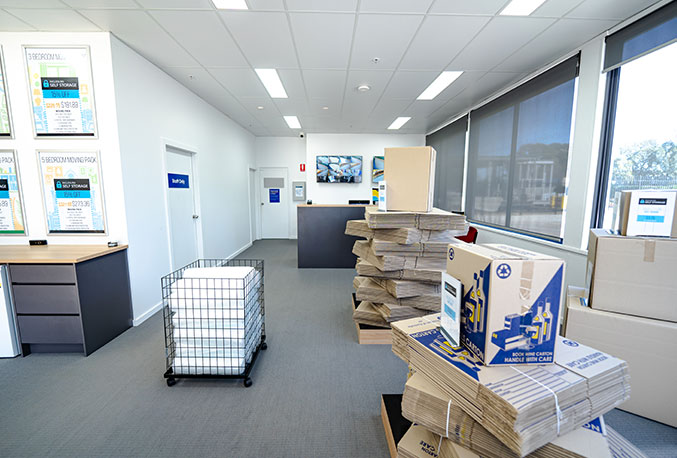Whether you’re in the manufacturing, construction, carpentry, plumbing, electrical or agricultural sector, it is vital to safeguard the machinery and equipment that keep your business moving forward.
Storage facilities, such as Ingleburn Self Storage, provide a secure, affordable, accessible solution to the issue of where to store these valuable assets. However there are a number of crucial steps you should take to ensure your machinery and equipment remain in good condition while in storage.
In this handy guide, we’ll share some essential steps you can take to protect everything from large industrial and agricultural equipment right down to workshop tools.
Step 1: Clean & Prepare
Properly preparing your tools and equipment prior to storage will save you a lot of expense in the long run. Follow these simple instructions to ensure your items are ready for storage.
- Thoroughly clean and dry your equipment: Remove dirt, dust, and debris from the machinery. This includes cleaning and degreasing the surfaces to prevent rust and corrosion. Make sure everything is completely clean and dry before moving to the next step.
- Properly lubricate all parts: Apply the correct, high-quality lubricants to all moving parts to prevent them from seizing during storage. Check the manufacturer’s recommendations for suitable lubricants.
- Drain used fluids and replace with clean fluids: If your machinery uses fluids such as oil, fuel or coolant, ensure these are drained and properly disposed of according to local regulations. Leftover fluids can degrade or cause damage over time. Working according to the manufacturer’s instructions, refill fuel tanks, radiators and sumps with clean fluids to prepare for storage.
- Protect sensitive components: Use appropriate protective covers for sensitive areas, such as electrical components, control panels, and displays.
- Protect the battery: If storing for more than a couple of weeks, start the engine regularly or use a battery tender to preserve the battery.
- Prevent tyre flat spots during long term storage by moving the vehicle regularly, using jack stands, tyre pads or mats or tyre cradles.
Step 2: Choose The Right Self Storage Space
Selecting the right storage space will help to ensure that your machinery stays safe and sound.
a. Indoor Storage Units
These offer maximum protection against sunlight, dust, dirty harsh weather conditions and potential theft. Powered units that allow the use of climate-control devices, battery tenders and power tools are even better, as these provide optimal conditions for preservation, while also allowing you to carry out routine maintenance and repairs.
b. Outdoor Storage Spaces
Outdoor storage spaces might be required to house larger pieces of machinery. These storage spaces are also more cost-effective than indoor spaces, making them ideal for businesses on a tight budget. They are also great for storing more rugged and robust pieces of equipment. It is possible to take precautions to protect machinery stored in outdoor spaces, for example using weather-resistant covers or enclosures to protect machinery from rain, UV exposure, and dust.
c. Ground Level Storage Spaces
Ground level storage spaces are best for large pieces of machinery and equipment as the drive-up access makes it easy to access the storage area. That said, smaller pieces of equipment and tools can be stored in upper level storage units provided that there is a sturdy goods and passenger lift by which to access the unit.
Step 3: Properly Secure All Stored Equipment
It’s vital to properly secure all stored equipment and machinery to prevent accidents, damage and theft. Here are a few things that will help to ensure your equipment stays safe in storage.
- Stable Surface: Make sure that your machinery is stored on a stable level surface, such as a concrete pad or gravel surface, to prevent instability or tipping over.
- Parking Brake: Engage the parking brake to prevent machinery from moving during storage.
- Chocking: Use wheel chocks to prevent equipment with wheels from rolling around during storage.
- Locks and Security Systems: Choose individually lockable units, or if outdoors, use locks to secure your equipment. Store the keys to locks and equipment in a safe place. Select a storage facility that is protected by the latest security systems, such as flood lights, security fences, 24/7 CCTV surveillance and access control, and on-site staff to deter theft and unauthorised access.
Step 4: Create a Maintenance Schedule
Regular maintenance even during storage ensures that your machinery is ready for action when you need it. At a minimum, inspect stored machinery and equipment monthly to
Establish a maintenance schedule to check:
- Damage: Look out for signs of corrosion, rot, decay, disintegration and/or pest infestations.
- Lubrication: Reapply lubricants as needed to maintain moving parts.
- Electrical Components: Inspect and test electrical components for functionality and corrosion.
Step 5: Take Special Precautions for Long-Term Storage
If you anticipate long-term storage (a month or more), you’ll need to take extra precautions to protect your stored machinery.
These include:
- Disassembly: If possible, disassemble machinery into its components to save space and reduce the risk of damage. Store each component according to the manufacturer’s recommendations.
- Sealing: Use airtight, waterproof or humidity-controlled containers for small components or parts that may deteriorate over time.
- Records: Keep detailed records of the maintenance and storage requirements, inspections and procedures undertaken for each piece of machinery, including photographs and manuals.
Safely storing machinery is not only about protecting your investment but also ensuring that your equipment performs optimally when you need it. By following these guidelines, you’ll be safeguarding these valuable assets and prolonging the life of your machinery.


for Only $1 with a Minimum 2-Month Stay